Brassinosteroid signaling directs formative cell divisions and protophloem differentiation in Arabidopsis root meristems
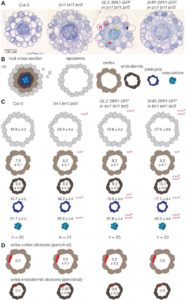 It’s been 20 years since the identification of BRI1, the first brassinosteroid (BR) receptor. Although many components of the BR signaling pathways have been identified, details continue to be revealed. Kang et al. examined the phenotype of a triple mutant, bri1 brl1 brl3, that lacks all three functional BR receptors. Root elongation and protophloem differentiation are both impaired in the triple mutant, and as expected fail to be rescued by exogenous BR application. The impact of adding back functional BRI1 in a cell-restricted pattern was assessed; the root meristem phenotype was not fully rescued by BRI1 expression in the epidermis or in the non-protophloem stele cells, but was rescued by expression solely in the protophloem cells. These results indicate that BR’s effects in the root involve partly cell-autonomous and partly non-cell-autonomous effects and reveal an unexpected role of the protophloem in systemically conveying BR effects in the root meristem. Development 10.1242/dev.145623
It’s been 20 years since the identification of BRI1, the first brassinosteroid (BR) receptor. Although many components of the BR signaling pathways have been identified, details continue to be revealed. Kang et al. examined the phenotype of a triple mutant, bri1 brl1 brl3, that lacks all three functional BR receptors. Root elongation and protophloem differentiation are both impaired in the triple mutant, and as expected fail to be rescued by exogenous BR application. The impact of adding back functional BRI1 in a cell-restricted pattern was assessed; the root meristem phenotype was not fully rescued by BRI1 expression in the epidermis or in the non-protophloem stele cells, but was rescued by expression solely in the protophloem cells. These results indicate that BR’s effects in the root involve partly cell-autonomous and partly non-cell-autonomous effects and reveal an unexpected role of the protophloem in systemically conveying BR effects in the root meristem. Development 10.1242/dev.145623


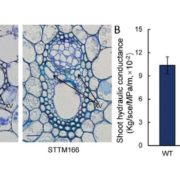
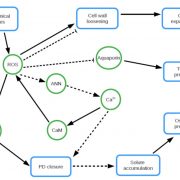
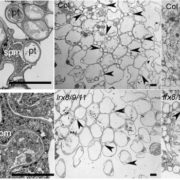
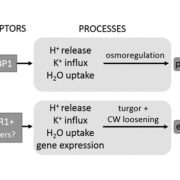
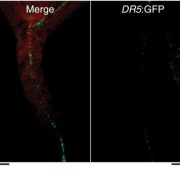
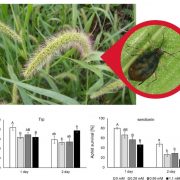
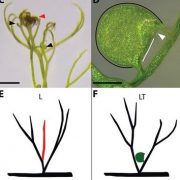



Leave a Reply
Want to join the discussion?Feel free to contribute!